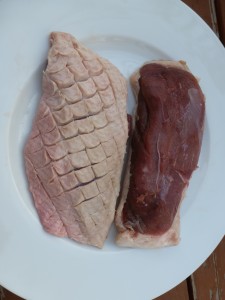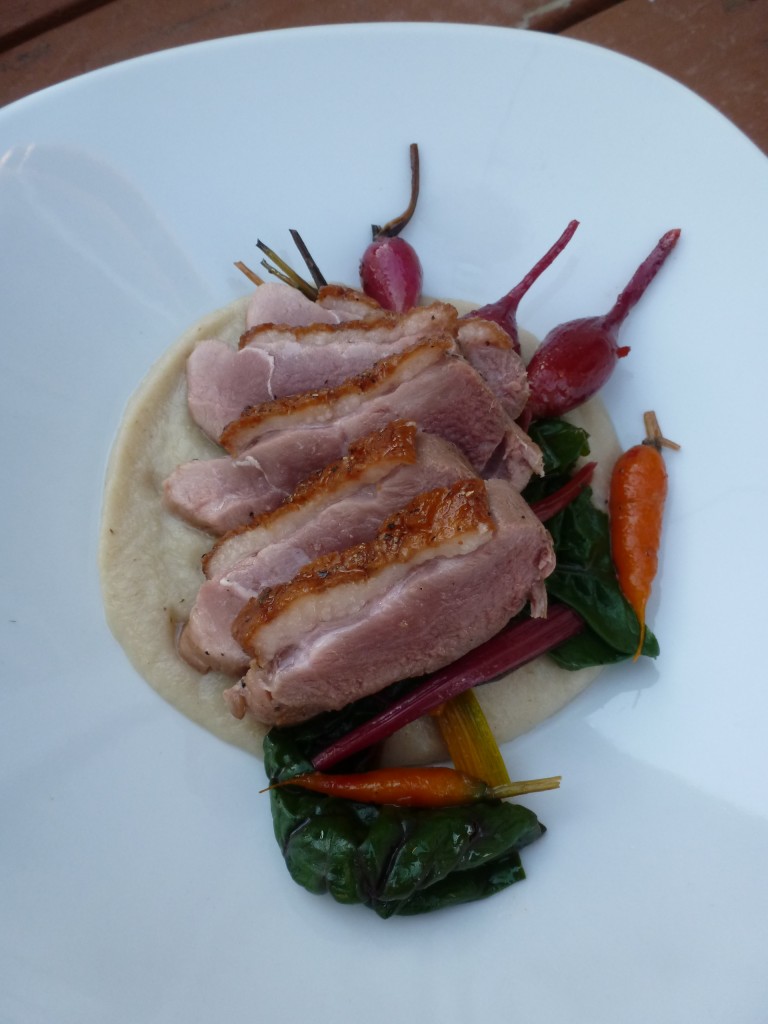 If you spend enough time with culinary types, eventually you’re going to hear some douchebag call a duck breast a magret.
If you spend enough time with culinary types, eventually you’re going to hear some douchebag call a duck breast a magret.
Magret is a term from Gascony, a Basque region of southwestern France. This is the spiritual home of modern foie gras: the liver of ducks and geese that have been forcibly fattened by a process called gavage. The many products and byproducts of these fattened birds form the pillars of the remarkable cuisine of Gascony. For instance, the rendered subcutaneous fat is the main cooking fat in the region, and is used to make confit.
Traditionally, magret refers to the lean portion of a bird that has been fattened for foie and confit, namely the lean meat of the breast. The magret can be used in confit, but in rustic taverns the breast was often separated from the fat and skin, then seared and served rare, like a beefsteak. Sometime in the 1960s, restaurateurs in the Landes region of Gascony started doing this, and the trend caught on in fine-dining establishments throughout the western world.[1] Outside of France, the term magret started being applied to all duck breasts, even if the bird wasn’t fattened for foie gras.
The ducks available to us here in Edmonton have very little in common with the fattened poultry of southwestern France. First, they are different breeds. Since the 1960s, the most common foie gras bird in Gascony has been the Moulard[2], which is a cross between a Pekin and Muscovy. Common North American breeds include the Long Island, Pekin, and Muscovy, and most are not aggressively fattened. Since these ducks don’t have a huge amount of subcutaneous fat, the skin is usually left on the breast. (The exceptions of course are the few foie gras producers. To my knowledge, all of the producers of foie gras in Canada are in Quebec. They include Palme d’Or, Aux Champs d’Élisé, and Palmex, all of which raise Moulard ducks.[3])
The goal in cooking such a piece of meat is to get crisp skin, well-rendered subcutaneous fat, and rare or medium-rare flesh. The difficulty, then, is in rendering the fat long enough so that it isn’t flabby and chewy, without overcooking the meat. First the skin is scored to help leach out the fat. Then the breast is cooked in a pan, skin-side down, over low heat, for several minutes. This renders the fat while cooking the meat very slowly.
To tenderize, the breast is usually sliced into thin strips, across the grain of the meat.
Below is a duck breast from Greens, Eggs, and Ham, with celery root purée and backyard baby veg:

1. Many sources claim that a particular Gascon chef, André Daguin, “invented” the idea of serving rare magret. Daguin himself says this in his book Foie Gras, Magret, and Other Good Food from Gascony. Larousse Encyclopedia, however, insists that it was common practice to serve rare magret in the rustic taverns of the region, so my assumption is that Daguin simply popularized the dish. Up for debate, I guess.
2. From this interesting bit of EU bureaucratic paperwork: “Committee on Animal Health and Animal Welfare on Welfare Aspects of the Production of Foie Gras in Ducks and Geese”. European Commission. December 1998.
3. The respective websites of the three producers all mention their use of Moulard, or Mullard, ducks.